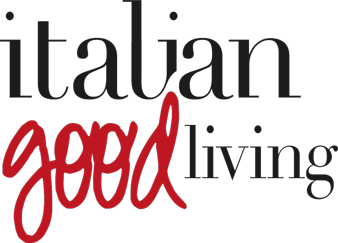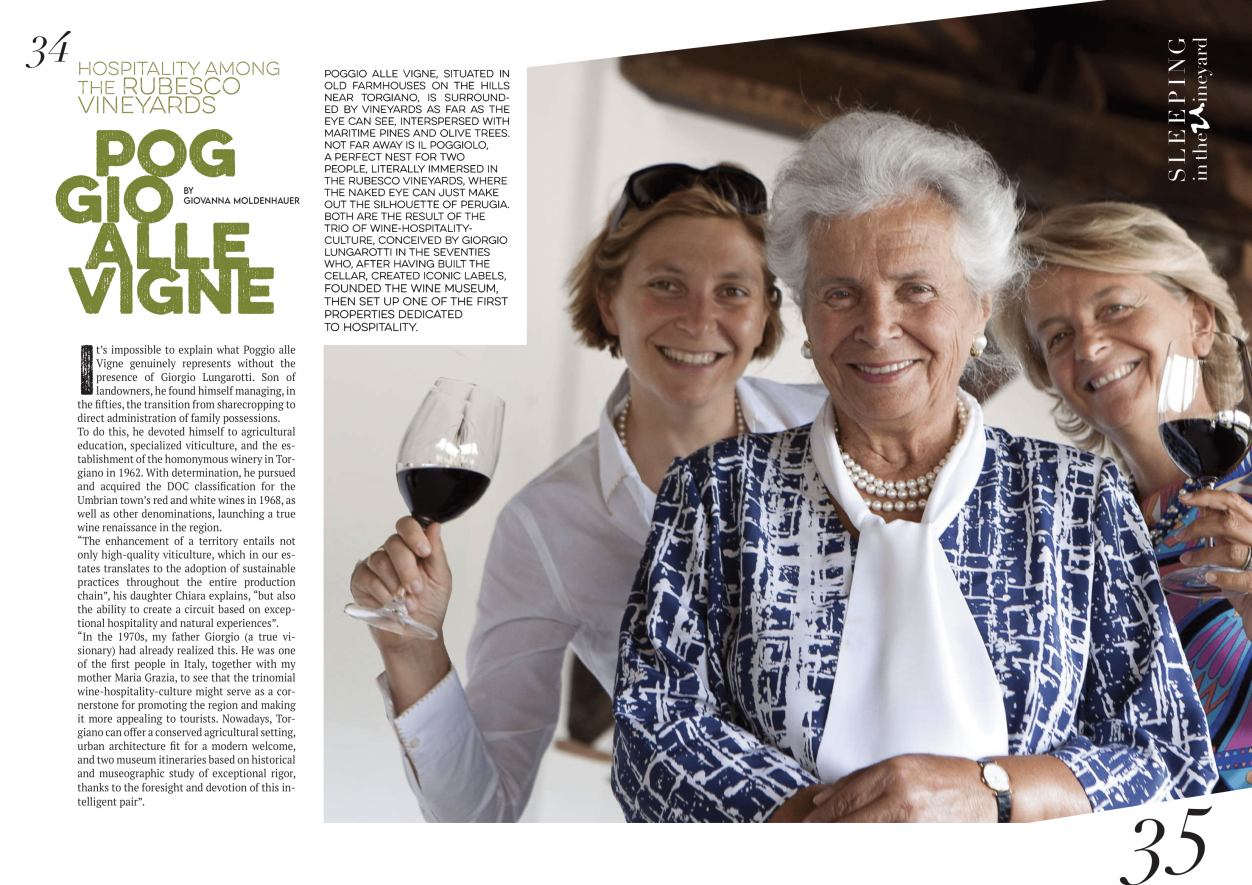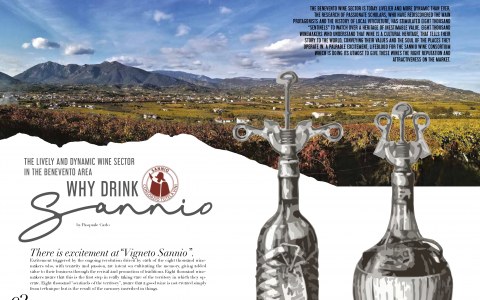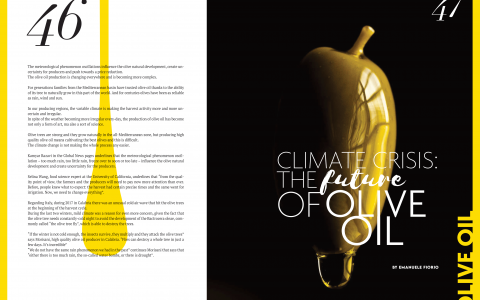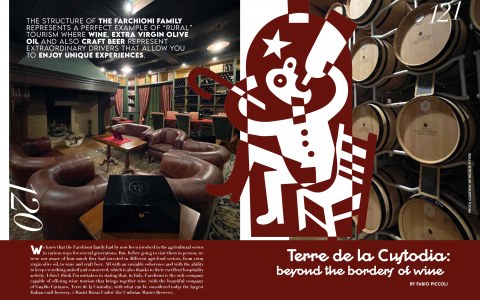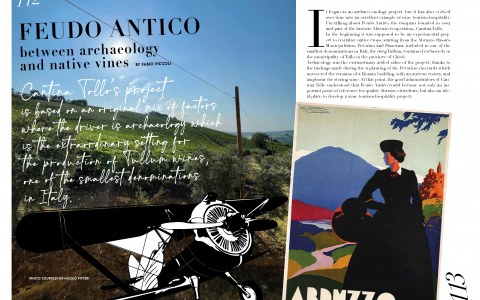Hospitality among the Rubesco vineyards: Poggio alle Vigne
by Giovanna Moldenhauer
It’s impossible to explain what Poggio alle Vigne genuinely represents without the presence of Giorgio Lungarotti. Son of landowners, he found himself managing, in the fifties, the transition from sharecropping to direct administration of family possessions. To do this, he devoted himself to agricultural education, specialized viticulture, and the establishment of the homonymous winery in Torgiano in 1962.
With determination, he pursued and acquired the DOC classification for the Umbrian town’s red and white wines in 1968, as well as other denominations, launching a true wine renaissance in the region.
“The enhancement of a territory entails not only high-quality viticulture, which in our estates translates to the adoption of sustainable practices throughout the entire production chain”, his daughter Chiara explains, “but also the ability to create a circuit based on exceptional hospitality and natural experiences”.
“In the 1970s, my father Giorgio (a true visionary) had already realized this. He was one of the first people in Italy, together with my mother Maria Grazia, to see that the trinomial wine-hospitality-culture might serve as a cornerstone for promoting the region and making it more appealing to tourists. Nowadays, Torgiano can offer a conserved agricultural setting, urban architecture fit for a modern welcome, and two museum itineraries based on historical and museographic study of exceptional rigor, thanks to the foresight and devotion of this intelligent pair”.
Near the main structure, which opened in 1994 and is located approximately a quarter-hour from Perugia and twenty minutes from Assisi, vineyards stretch as far as the eye can see, intermingled with massive maritime pines and olive trees. You could get a proper art-house welcome here, according to a tradition that started in 1978 at the now-defunct Torgiano guesthouse “Le Tre Vaselle“: basically, visitors are housed in ten apartments that, as a result of the meticulous restoration of the old 17th century farmhouses, have access to a swimming pool and a large natural park.
Then, in 2009, Poggio alle Vigne inaugurated “Il Poggiolo”, a modest nest for two people immersed in the Rubesco vineyards, made from the recovery of a rustic annex from which the majestic silhouette of Perugia’s bell towers can be seen in the distance.
Visiting the cellars of Torgiano and Montefalco – the latter bought twenty years ago in the town that represents the art of Benozzo Gozzoli and Sagrantino – means learning about the wines that have made Umbria famous across the globe.
An adventure that starts in the vineyards and continues through the vinification and maturing of the wines, all the way to the “vault” of previous vintages. If you’re looking for a unique experience, try the well-known Rubesco and Riserva Vigna Monticchio wines, as well as one of the three Traditional Methods (if you prefer bubbles). Why not stop by the Enoteca della Cantina in Torgiano or the Osteria del Museo in Torgiano to pair these exceptional wines with traditional Umbrian gourmet products?
MUVIT, which was founded in the halls of Palazzo Graziani-Baglioni to bring together wine and decorative arts, was described by the New York Times as “the best in Italy” for the excellence of its artistic collections. The one about olives and olive oil, which Maria Grazia constructed on Giorgio’s request and opened in 2000, is a natural progression of the previous one. “After all” says Teresa, Chiara’s sister “these two thematic museums (both classified as museums of decorative arts) are a destination for wine tourists as well as art enthusiasts, foreigners seeking our culture’s origins, students, and families. There is no wine in MUVIT; we just discuss its culture”.
